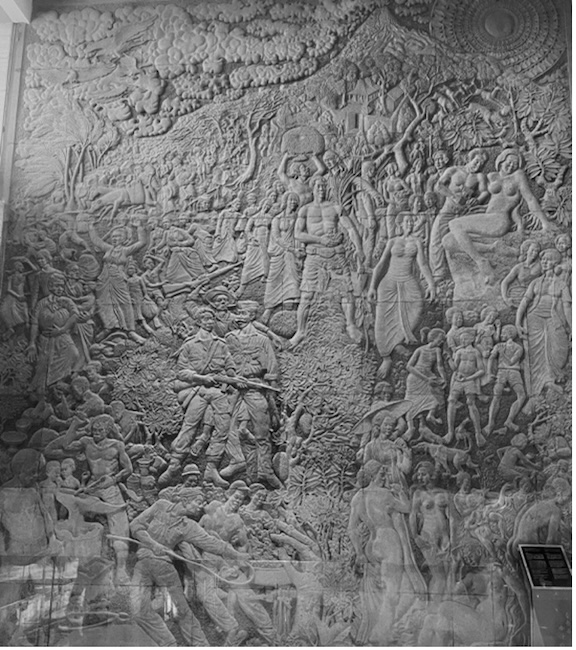by MARK WOODWARD

Originally known as the Ambarrukmo Palace or Kedhaton Ambarrukmo, the Ambarrukmo Hotel in Yogyakarta is one of four international standard hotels Sukarno ordered to be constructed in the 1960s. The others are Hotel Indonesia in Jakarta, The Bali Beach Inter-Continental in Sanur and the Samudra Beach Hotel in Pelabuhan Ratu. For Sukarno, building them was much more than a series of construction projects. It was a nationalist strategy focused on attracting international attention for the new nation. All four hotels house important examples of modern Indonesian art. Sukarno used art, architecture and monuments as revolutionary, ideological and diplomatic tools.


Sukarno was well suited for the task of symbolic nation building, both known as a nationalist, a revolutionary and an ideologue. He was also an art aficionado, collector and an accomplished amateur painter. As president he was also the most important patron of the arts and a trendsetter who did much to shape the development of a distinctive Indonesian modernist style. Sukarno was so fond of art that after his fall from power in 1966 he is said to have missed his collection and his association with artists more than anything else. He continued a centuries old Southeast Asian tradition in which art works and monuments are not only representations of cosmological orders but also serve to establish them as socio-political realities. Sukarno built on this tradition to construct what Robert Bellah called a ‘civil religion’ – a constellation of quasi-sacred rituals and symbols that binds a nation together. Sukarno’s Indonesian civil religion included romanticised, idealistic portraits of what Indonesia had been, was then, and the modern society it was becoming. The overarching theme was that of Indonesia as a modern, revolutionary, postcolonial society deeply rooted in the country’s traditional cultures.
Inside Indonesia for more
